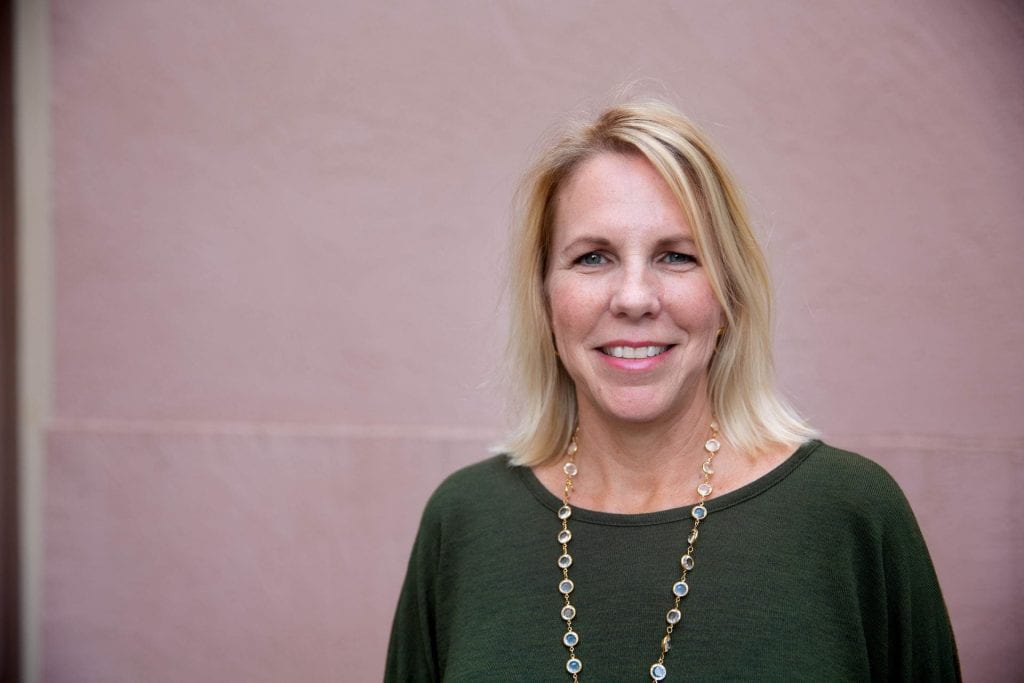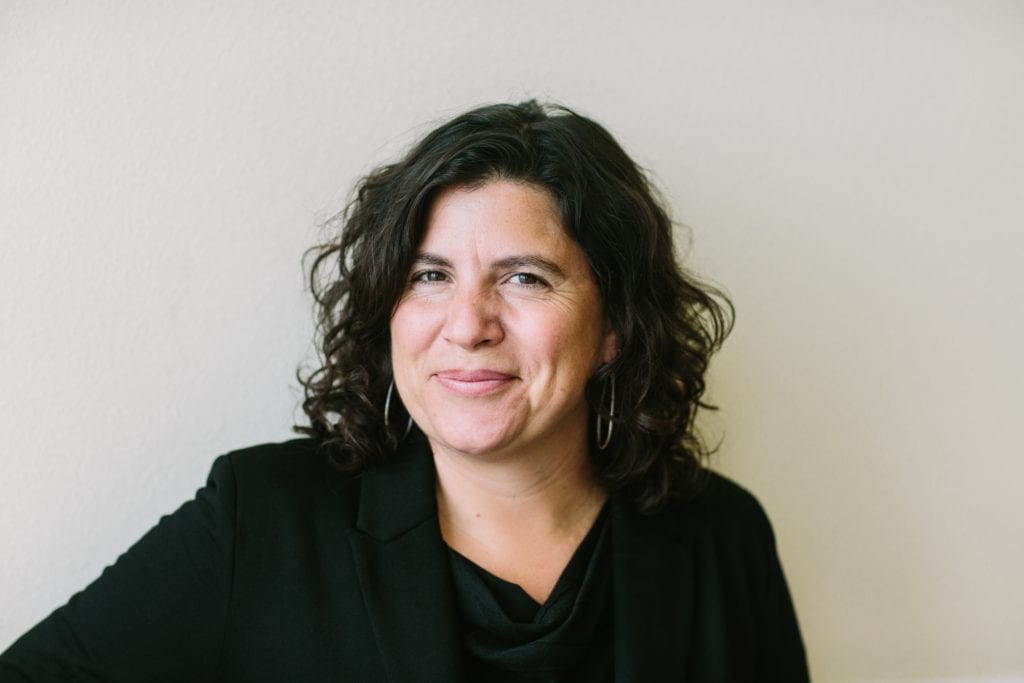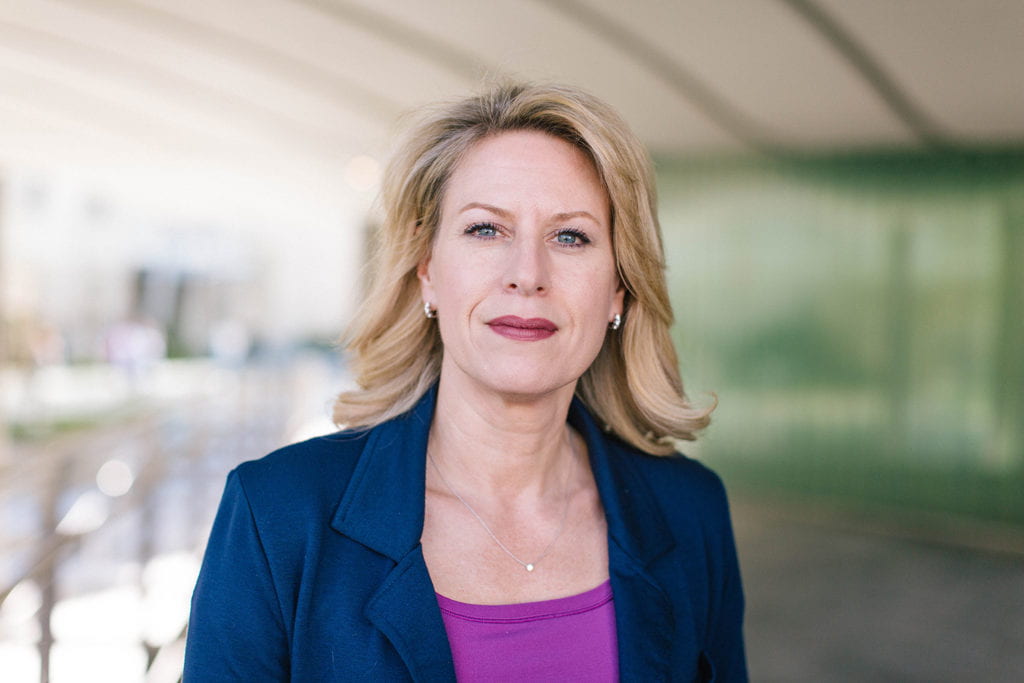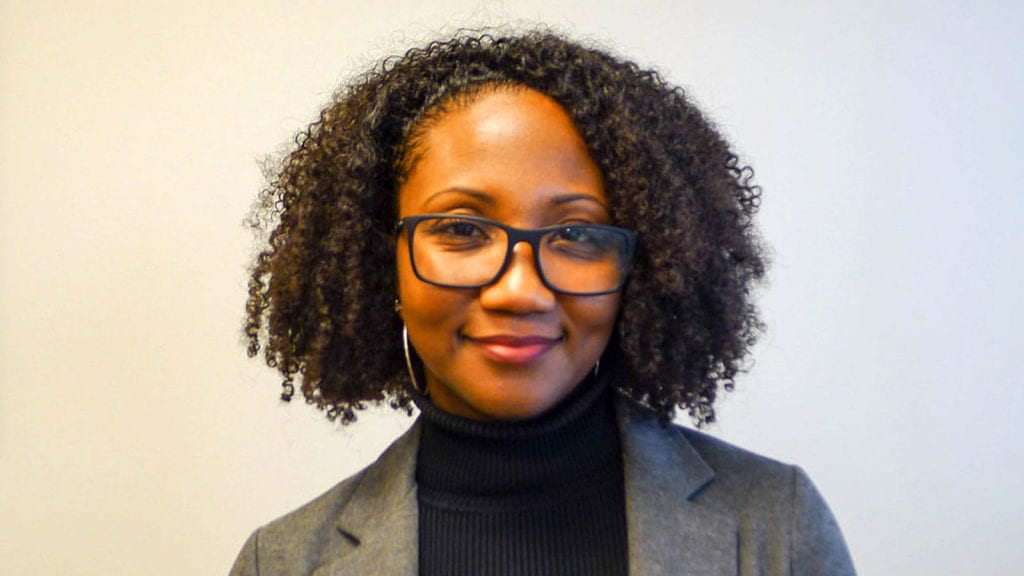In 2013, Tim Redmond launched 48hills.org. During our conversation we discussed his project tracking evictions and how teaching affects his journalism.
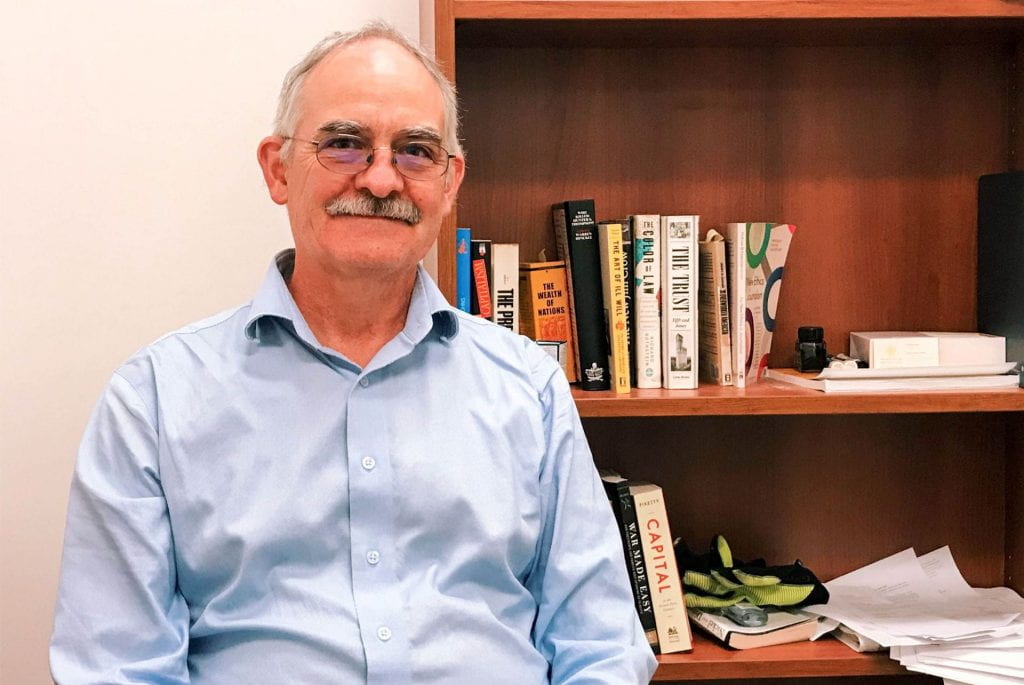
How did you end up at USF?
I started in the Masters of Urban and Public Affairs program. I have been a journalist all my life. I was at the Bay Guardian for about 30 years, and I started 48hills.org, which is a digital daily newspaper. I’ve been writing about urban studies and urban issues my entire career, and at USF, I taught Urban Public Policy and then Economics of Social Justice in the Master’s in Urban and Public Affairs. The Media Studies Department was looking for someone to teach journalism, so now I teach—journalism, investigative reporting, American journalism ethics, civic media, and in the master’s program.
What research are you doing right now?
One of my master’s students and I are working on a major project that’s tracking evictions of longtime residents in the Mission and looking at who replaced them. We’re doing a socioeconomic, demographic, political and real estate study. We’ve chosen 14 buildings where there was an Ellis Act eviction, a no-fault eviction where the tenants are forced out so that the owner can flip the places.
We’re looking at who was living there, when they got evicted, where they went—a lot of them have had to leave town—and who moved in. This is all done through public records and through investigative techniques that I teach. We’re putting together a profile of the changing Mission, building by building, to show people the impact of the tech boom and the Ellis Act and that this wave of displacement has had on longtime San Franciscans.
Where did the research process start for this project?
The Anti-Eviction Mapping Project looked at one building with a contested eviction. I thought, “Wow, that’s a great idea. Why don’t we do that for the entire Mission?” I’ve learned in investigative reporting that if you take on to bigger project, it never gets done. You need to take on a project that’s doable. We picked 14 buildings and analyzed building by building. That means going down to the assessor’s office and pulling all of the records on who owned the building, how long it’s been owned, who sold it, who bought the building, when it was flipped as condos, who those people are, and then go and knock on doors. A lot of the folks who move in have no idea that they’ve displaced a longtime resident. They’re just looking for a place to live. It’s doing a lot of public records work, research and phone work, and then knocking on doors.
I’m really interested in displacement and the economic impacts of displacement in San Francisco. A couple years ago, I did a big project with another reporter looking at how many of the new condo buildings in San Francisco are vacant. As many as 30% of the units appear to be unoccupied. We did that by using public records, by looking at the tax bills for each of those places, and looking to see if the tax bill went to the same residence. Most homeowners get their tax bill at their home. For 30% of the units, the property tax bill is going to New York or someplace else in California. Then you find that the person getting the tax bill owns six other houses in the state, and you get a sense that they’re not using this as a full-time residence.
How do you do these collaborative projects?
Sometimes freelance writers or researchers actively involved in political issues come to me. Some of it comes from activists and participants in the political process. Some of it comes from just noticing things.
When I started 48 Hills, I thought San Francisco as always needed to progressive daily newspaper back when I got into the business that would have required tens of millions of dollars for printing presses, so they’re expensive stuff. Now it’s a few hundred bucks for a designer and a WordPress template to get started. Rather than trying to make a profit off this, we just try to break even. This is community supported journalism. I like to think that we’re paving the way for that model. I also like to think that someone’s going to give us $5 million, and we’re going to hire a whole bunch more staff.
It’s a fairly small operation, but I don’t think you have to be a huge operation to have an impact on the community. We’re active in the community. It’s not just news, obviously. We do a lot of arts, culture, and entertainment. Democracy cannot survive without journalists, and local democracy cannot survive without local journalists.
How did you first become interested in journalism?
My first year of college, I walked into the student newspaper office and said, “Hey, I’d like to volunteer.” I ended up spending four years working in the student newspaper. By the time I graduated, I was editor and also learned that even a small publication can have a huge impact.
In 1978, the big issue on campus was university investments in businesses that did business in South Africa. This was the days of apartheid. Nelson Mandela was still in jail. Archbishop Tutu was calling on American institutions to divest from companies that did business in South Africa. I was wondering how much business Wesleyan does and how much of the portfolio is in companies doing business in South Africa. It’s a private university. It’s not public information, but we managed to get it. We did a big story on the front page listing all the investments in companies that did business in South Africa, raising all the questions, and talking about the divestment and the international anti-apartheid movement. Six weeks later, 200 students took over the president’s office. The New York Times was there, CBS, NBC, helicopters, the police. We had this little twice a week newspaper with 2,500 copies, and we had this impact.
I got out to San Francisco and started working for the Bay Guardian, which at that time was a relatively small weekly newspaper. I realized that you don’t have to be the New York Times have an impact on your community. Community journalism can have a huge impact. The Guardian grew from a circulation of 30,000 to 150,000, and we went from about 28 pages a week to about 170 pages a week. I was there through all of this growth and always kept in mind that this is community journalism with a goal of making this a better place for the people who live here.
I started off covering real estate development, tenant issues, gentrification, city planning, which became one of my key beats. I started realizing that the battleground over development in San Francisco was in thick environmental impact and economic impact reports that no one was reading. The planning commissioners weren’t reading them. The supervisors weren’t reading them, and the mayor clearly wasn’t reading them. Most daily newspaper reporters weren’t reading them because they had deadline in four hours.
I started looking into all of these government documents. When you have the data in front of you, and you can say this is the impact this project is going to have on the city—how many more cars it’s going to put on the streets, the impact on Muni, and the impact it’s going to have on water and sewer. You can just say to the decision makers, did you even know this? You’re approving this and they’re not paying for any of this? I’ve always been fascinated with data, and I’m very interested in discrepancies and knowledge missing from the political puzzle.
I call myself a political reporter, which means I write about politics, but I’m also a reporter who’s political. The politics of San Francisco, in many ways is the politics of land use and development, because that’s about who gets to live here and who doesn’t. Who lives here votes here.
What are you looking at next?
I want to write a book about how the baby boomer generation, my generation, lost faith in government and how that’s affected American politics.
My parents’ generation didn’t mind paying taxes because my parents saw government as the force that beat the Great Depression and won the World War One and World War Two. I just missed the Vietnam War. I was born in ’58, so I missed the draft by two years. The people I grew up with saw government as the force that wanted to send you to die in Vietnam and put you in jail for smoking pot. When Ronald Reagan said “Government is not the solution, government is the problem,” a lot of baby boomers said, “Yeah, you’re right.” In 1980, a majority of the people who subscribe to Rolling Stone magazine voted for Ronald Reagan.
Right now, the two fundamental issues facing humanity and civilization are economic inequality and climate change, and they’re completely linked. Those are problems that can only be solved with collective solutions, which requires government action. It requires new rules and regulations that companies have to follow. Economic inequality doesn’t happen on a voluntary basis. Philanthropy is not going to solve a problem that has to be done by government through taxation and redistribution. How do we convince the next generation that that’s worthwhile? I also want to turn my economics of social justice class into a book, but I don’t know if we’ll ever get around to that.
How does teaching inform your work as a journalist?
I am constantly interacting with the next generation of readers. I constantly think about how my students get their information and about how journalism is evolving. My students are full of great ideas.
One of the best ways to learn to be a better journalist and editor is to teach. I teach students clarity, how to write, how to write in a way that other people can understand, particularly in fields like economics. I try to teach that journalism is about making people understand things. Part of what I do in my economics and social justice class is trying to translate complex stuff into a form my students can understand. It’s always about making information clear for people.


